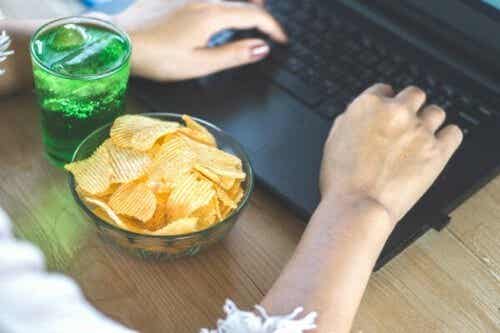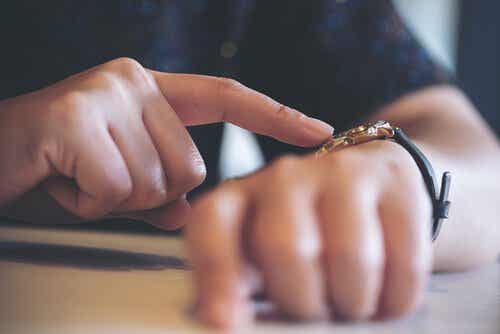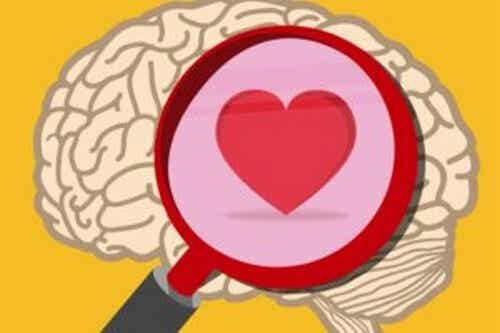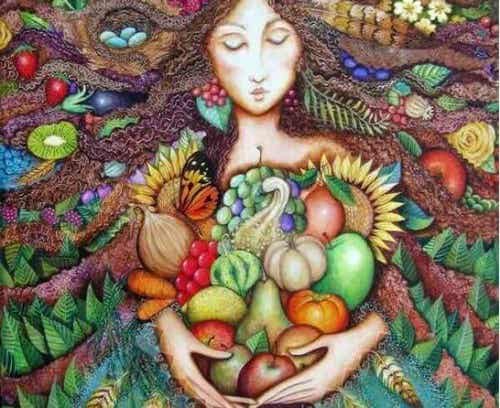Kneading bread or cooking, sipping wine or snacking between meals ... Food in the current isolation acts as an escape route for our emotions. A way to get pleasure in a context of high anxiety.

Written and verified by the psychologist GetPersonalGrowth.
Last update: 15 November 2021
Emotions are not only felt, but eaten. Food during quarantine is one of the realities that can be influenced by the very unusual context we are experiencing, to the point of serving in many cases as an emotional escape route. Quarantine acts as a detonator for anxiety and this alters our eating habits in different ways.
Eating is more than reaching satiety. Much more than just getting nutrients and energizing the body. This is demonstrated by the fact that when we are in the supermarket or in the kitchen, we do not always think about the vitamins, proteins or minerals we need. What we are looking for, on the other hand, is to enjoy a good dish, feel pleasure and offer something good to our loved ones.
Food is pleasure and, at a time when anxiety and stress dominate our lives, it acts as an authentic outlet. It is an obvious reality. Certainly there are those who, even during the quarantine, do not lose sight of the importance of maintaining a healthy and balanced diet. However, we cannot ignore that other people already had some eating disorders.
On the other hand, it is a fact that in these weeks of isolation at home, the consumption of all those unhealthy foods that have the power to channel our emotions has increased.
The classic snack products, snacks and alcoholic drinks are indispensable for many when filling the trolley at the supermarket. A curious phenomenon that we have witnessed, for example, is the bulk purchase of brewer's yeast, until stocks are exhausted. Let's see how we behave towards food during the quarantine.
Food during quarantine as an emotional escape: what shouldn't be missing from the shopping list?
The psychology of emotions and the sciences of nutrition teach us that when we are under pressure or anxious, our eating habits change.
In the current context, in one way or another, probably everyone has changed their diet, improving or worsening it. Let's see the main eating behaviors in the last few weeks.
Breaking the rule so as not to think about what is happening
Eating to not think. Focus on foods that generate well-being in order to silence negative emotions. This behavioral pattern determines what we put in the shopping cart.
We spend the whole day at home and to make the hours more pleasant, we rely on sweet, salty, wine, beer, carbohydrates ... The mind makes a strange agreement with our emotions: eat, enjoy food and don't worry. It sounds nice, but when eating becomes escapism, there is a problem.
In general, all foods that offer serotonin and dopamine have a short-lasting effect on the brain - a spike and a sharp fall. More than satiating, they are addictive and force us to eat less nutritious and unhealthy products more frequently.
Exceptional stressors, pandemic effect and disordered eating behaviors
The pandemic is putting a tremendous amount of stress on us all. A collection of unforeseen situations unfolds before us, often fraught with anguish and pressure.
We are also living a common experience, the same one that makes the behavior of each of us similar. The pandemic effect is practically inevitable in a hyper-connected world through technology.
If initially we stocked up on toilet paper, in recent weeks the consumption of snacks, wine and the whole range of products to nibble that keep us company during our hours of telework or in front of the TV has increased.
The old family recipes, another emotional escape through food during the quarantine
We have said that emotions are eaten, especially when anxiety is felt. Well, what follows is another interesting behavior.
The increased free time we have has pushed us towards the stove. Have you noticed that in many are dusting off childhood recipes, family dishes prepared by mothers or grandparents?
This is also a way to redeem emotions and memories, to make the wait more bearable through a relaxing activity such as cooking.
Make bread (or any other product) and post the photo on social media
Confinement is shaping another widespread behavior: hyperactivity. There are those who practice sports in the most curious and unusual way, those who give themselves to bricolage, those who have started studying again. And there are also those who cook and then post the image on social media and get a like. This is also an emotional escape.
In recent weeks one of the most popular products in the supermarket has been brewer's yeast. A sudden interest in homemade bread, sweets and the whole world of baked goods.
Preparing a recipe is a source of pleasure. First, it is the activity itself that relaxes and motivates. Working with the hands is always a catharsis for the brain.
This is followed by another kind of pleasure: getting a "like" on Instagram. So reinforcements arrive from all sides: from our family members who enjoy the food and from those who, far away, see the image.
In conclusion, these days buying food, eating it and even preparing it with our hands acts as an outlet for our emotions. However, we avoid falling into negative behaviors for our health, such as excessive consumption of alcohol and those foods that contain more calories than nutrients. It's time to take even more care of ourselves.


























